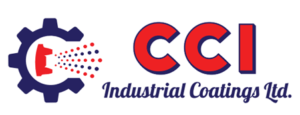We hear this question a lot. Oftentimes folks want to know if this is caused by heat created during blasting or the barrage of abrasives against the surface. It makes sense. Heat is known to warp things. But all the blasting and hammering can turn a smooth surface into Olympic-sized moguls.
So which one is it? Let’s take a look at both heat and peening to find out how they effect the surface of the product, and more importantly, how do we prevent them from ruining a perfectly good piece of sheet metal.
Abrasives can definitely cause heat. Think of it like friction. The faster and harder something is rubbed with an abrasive surface, the more heat is going to build up. In some instances, it can even melt the surface you’re working on. Ever used a belt sander on a piece of plastic? You get the idea.
But is the heat causing the metal to warp?
Yes and no. All that friction simply serves to heat up the metal, making it more malleable. The more malleable and softer a surface is, the easier it is for any amount of peening to create divots all over your sheet metal.
Think of it like a frozen steak. Difficult to cut through, even harder to tenderize. But thaw it out and you can suddenly cut through it and get the hammer going to make a lean piece of prime rib.
So if heat is just a catalyst, what’s the real reason metal warps? The answer to that is peening.
If heat makes things soft, then it’s the constant hammering of all those little grains of sand into that soft material that causes things to warp.
Each grain of sand acts like a tiny hammer hitting the surface. This stretches out the metal, causing it to warp. This is why you’ll see myriad little hills and valleys forming over thin sheet metal that’s been sandblasted.
So if sand’s the problem, can’t we just switch to a different abrasive like plastic?
Some have had great success with this method, claiming that plastic produces less heat, therefore making the metal more resistant to peening.
Others swear by dustless blasting, claiming the wet sand is smoother and cooler on the surface.
But both of these methods can still allow heat to build up and cause substantial warping, especially by a rookie sandblaster.
So what’s a sandblaster to do?
Since peeing is what’s causing things to warp, it should be obvious that not focusing on one area for too long would be the way to avoid divots. The recommended way is to move the spray back and forth across the metal rather than blasting in a solid stream until a spot is clean. Doing the latter will almost certainly cause heat to build up, allowing the abrasive to warp the metal, regardless of what media you use.
It’s also recommended that you watch your blast angle. Keep a steady spray going at a 45 degree angle to reduce heat build up and peening.
Lowering your air pressure will also reduce the impact the abrasive has on your sheet metal.
You should also use a fine abrasive grit. Anything below 150 is too coarse and will almost certainly create more peening. Finer grit, however, won’t reduce heat, so it’s recommended using this in conjunction with the other tips above.
And of course, when in doubt, take it to the professionals at CCI. Contact us today for a quote and we’ll make sure your sheet metal is as smooth a silk when it leaves our warehouse.
6767 Golden West Ave
Red Deer, AB T4P 1A7
Canada

We are a Canadian-owned and operated company offering solutions geared towards professional painting, expert custom coatings, and industrial corrosion protection.